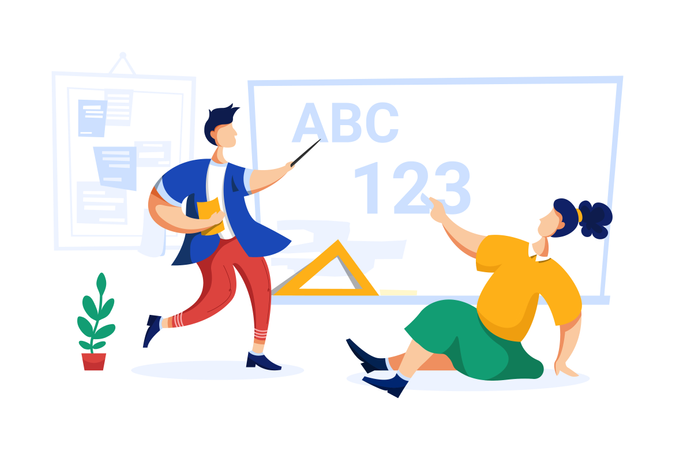About Spring 5.x Training

The Spring Framework is an open source application framework for Java. This framework has taken the Java software community by storm. Spring provided the technology to develop everything from small, stand-alone applications to large complex, enterprise systems out of simple POJOs (plain old Java objects).
In this class, students are exposed to the light-weight Spring container, configuration, foundational API, and general Spring architecture. Not just a class that focuses on theory, this course is loaded with practical labs and deals with configuration, maintenance and architectural issues. After taking the class, developers will immediately be able to utilize the Spring Framework in their new or existing applications.
Spring 5.x Course Prerequisite
Students should have a good understanding of the Java programming language. A basic understanding of relational databases and SQL is very helpful. A basic understanding of XML is also useful. Students that have attended Intertech’s Complete Java have the necessary background for this course.
Spring 5.x Training Course Objective
Learn how to download, setup and configure the Spring Framework
Explore the Spring Container and Modules
Discover the Spring philosophies and principles and how they impact application development
Understand dependency injection
Learn aspect oriented programming and how it is used to provide cross cutting concerns
See how to accomplish data access with Spring’s DAO Module
Understand how Spring deals with transaction management
Examine Spring’s unit testing framework
Spring 5.x Training Course Duration
60 Working days, daily one and half hours
Spring 5.x Training Overview
Spring Introduction
Differences between programming language, software technology and framework
Introduction to Spring Framework
Evolution of spring Framework
Modules of Spring in Spring 1.x,2.x,3.x,4.x and 5.x
MVC Architecture
Role of spring framework in MVC Architecture application development
Definition of spring framework
POJO Class, POJI, JavaBean, Component Class ,spring bean classes
Spring Core Module
Introduction to IOC
Introduction to Spring Container/IOC Container
Types of Dependency Injections
Setter injection
Constructor injection
Aware injection
Method injection
Lookup method injection
Introduction to Design patterns
Factory DesignPattern
Strategy Design pattern
Layered Application demonstrating real time dependency injection
Resolving/identifying params in constructor injection
Bean Inheritance
Collection Merging
Null injections
Bean alias
Default bean ids
Performing dependency lookup by using IOC container
tag
Understanding Factory Methods
Factory Method Bean Instantiation
Static factory method bean Instantiation
instance factory method bean Instantiation
Singleton java class and its usecases
Bean Scopes
Singleton
Prototype
Request
Session
Application
Websocket
Bean Wiring
Explicit wiring
Implicit wiring or auto wiring
ByType
ByName
Constructor
Autodetect
p-namespace,C-namespace
ApplicationContext Container
Preinstantiation of singleton scope beans
Working with properties file
I18n (Internationalization)
Event Handling
BeanFactory Vs ApplicationContext
Automatic registration of bean post processor and bean factory post processor
Bean Life Cycle
Declarative approach
Programmatic approach
Annotation driven approach
Nested IOC Containers
Presentation tier
Business tier
Various attributes of tag
FactoryBean
ServiceLocator as factory bean
FactoryMethod bean Instantation based service locator
Method Replacement/Method Injection
Aware Injection
Lookup method injection
BeanPostProcessor
BeanFactoryPostProcessors
PropertyEditors
Custom property editors
Spring Expression Language(SpEL)

Spring Core Module with Annotations
Spring stereo type annotations
@Component,@Service,@controller,@Repositry and etc…
@Autowired,@Qualifier,@Lazy and etc…
Working with Java config annotations
@Named,@Inject,@Resource and etc…
Working with properties file in annotations environment
Developing Layered applications in annotations environment
Spring Core Module with 100% Code/Java Config Approach.
Working with @Bean, @Configuration,@Lazy,@PropertySource and etc…
Developing Layered application
Working with AnnotationConfigApplicationContext
Spring Boot Core
Introduction to Spring Boot
Spring Boot primary goals
Spring boot features
Spring Boot Starters
Understanding @SpringBootApplication
Auto configuration
Example Applications
Spring Profiles
properties Vs application.yml
Spring Boot Standalone flow
Working with sts plugins in eclipse to develop spring boot application
Spring JDBC/DAO
Introduction
Plain JDBC limitations
Spring JDBC/DAO Advantages
Working with different Data Sources
JdbcTemplate
JNDI Registry and ServerManaged Jdbc connection pool
Callback Interfaces
Batch processing/Updating
NamedParameterJdbcTemplate
Working with SimpleJdbcInsert, SimpleJdbcCall
SimpleJdbcCall to call PL/SQL procedures
Mapping SQL operations as Sub Classes
Spring JDBC/DAO with Annotations
Spring JDBC/DAO with 100% Code Approach
Spring Boot JDBC/DAO
Spring Boot DAO-JdbcTemplate
Spring Boot DAO-Simple Jdbc Insert
Spring Boot Application Flow
Working with DataSources through AutoConfiguration in Spring Boot 1.x and 2.x
Spring AOP Module
Introduction
Need of AOP
Proxy design patterns
AOP Terminologies/Principles
Aspect, Advice, Joinpoint, Pointcut
Target Class, Proxy Class, Weaing
Types of Advices
Before Advice, After Advice, Around Advice
Throws Advice
Types of Pointcuts
Static pointcuts, Dynamic pointcuts
Programmatic Spring AOP
Declarative Spring AOP
@AspectJ Style AOP support
Spring AOP/AspectJ AOP with Annotations
Spring AOP/AspectJ AOP with 100% Code Approach
Spring AOP/Aspectj AOP with Spring Boot AOP
Spring Transaction Management
Introduction to Transaction Management
Local Transaction Vs Distributed Trasanction
2pc Principle
Transaction models
Flat Transaction Model
Nested Transaction Model
Need of Spring Transaction Management
Choosing Spring Transaction Manager
DataSourceTransactionManager
Hibernate TransactionManager
JTATransactionManager and etc…
Different ways of implementing of Spring Transaction management
Programatic approach
Declarative approach using Spring AOP/AspectJ AOP
Annotation Driven Approach using AspectJ AOP
100% code Driven approach using AspectJ AOP
Spring Boot Driven approach using AspectJ AOP
Transaction Attributes
Transactions and integration testing
Distributed TransactionManagement implementation using webLogic server,Atomikos API
Configuring Transaction isolation Levels
Read uncommitted, Read Committed
Repeatable Read, Serializable
Working with RollBackfor,noRollBackfor,Timeout and etc…in Transaction Management
Spring MVC
Introduction To MVC
Understanding MVC1,MVC2 Architectures
Front Controller Design Pattern
Intercepting Filter Vs Front Controller
Different types of Servlet URL patterns
Spring MVC Resources
Spring MVC flow
Structural Flow
Strategy Flow(Code based Flow)
DispatcherServlet
Different Controller Classes
ParamaterizableViewController
UrlFileNameViewController
AbstractController
AbstractComandController
SimpleFormController
MultiActionController
AbstractWizardFormController and etc…
Developing Mini Project with CURD operation
ContextLoaderListener
Working with Two Containers
HadlerMappings
BeanNameUrlHandlerMapping
SimpleUrlHandlerMapping
ControllerClassNameHandlerMapping
DefaultAnnotationHandlerMapping
RequestMappingHandlerMapping and etc…
HandlerMappingChaining
Form Validations
Enabling Server side Validations only when client side validation are not enabled
View Resolvers
InternalResourceViewResolver
UrlBasedViewResolver
ResourceBundleViewResolver
XmlViewResolver
TilesViewResolver
BeanNameViewResolver and etc…
ViewResolverChaining
Views
InternalResourceView
JstlView, TilesView, AbstractPdfView
AbstractXlsView and etc….

Exception Handling in Spring MVC
Tiles integration with Spring MVC
MessageSources and I18N
Formatting Labels, Formatting Numbers
Formatting Dates,
Formatting Currency Symbols
Locale
MVC namespace
Handler interceptors/Adapters
Checking Browser Type
Checking Timeout period
Preventing double posting problem
PDF Views and Excel Views
File Uploading and Downloading
Spring MVC with Annotations
Annotation driven Controllers
@RequestMapping, @Controller
@ModelAttribute,@SessionAttribute,@RequestParam
RequestToViewNameTranslator
MVC NameSpace
Annotation driven Form validation using Hibernate Validator API,JEE validator API
Spring MVC with 100% Code Approach
Dynamic Registration of Servlet
WebApplicationInitializer
SpringServletContainerInitializer
@EnableWebMVC,@Import
AbstractAnnotationConfigDispatcherServletInitializer
Spring Boot MVC
SpringServletInitializer
Working with embedded TomcatServer
Spring Boot MVC flow
Spring Boot dev tools
Properties,application.yml in Spring Boot
Developing Mini Project with CURD operation
Solving double posting problems in Spring Boot MVC using PostRedirectGetPattern
Profiles in spring ,Spring boot
Spring Security
Introduction
Authentication authorization
Authentication Manager and authentication info provider
Need of Spring Security
DeliagatingFilterProxy
SecurityNameSpace
Form Login
Remember Me
Session Concurrency
Logout and etc…
Working with Different Authentication Providers
Xml File,Properties File,DataBase,LDAP Server
Security Examples
Using Xml Configuratuions
Using Annotation Configurations
100% Code Driven Configurations
Spring Boot Configuration
Using LDAP Server as Authentication Provider
Spring Social
Introduction
Need of Spring Social
Understanding PAAS and SAAS
Accessing face book data
Accessing twitter data
Spring social Example
Spring ORM
Introduction to ORM
Spring ORM Advantage
Integrating with Hibernate
Spring with hibernate using HibernateTemplate
HiberanteTemplate and its methods
HibernateDAOSupport
HibernateCallback interfaces
Spring Data and Spring Data JPA
Need of Spring Data
Spring Data JPA
Finder Methods of Finder API
Repositories
JpaRepository
CURDRepository
Paging and Sorting Repository and etc…
Spring Data Custom Query
Automatic custom Query
Manual custom Query(@Query)
Spring Data Jpa Exception Translator
Difference b/w Hibernate and Spring Data JPA
Interacting with Mongo DB
JUnit Test Cases
Spring Batch
Need of Batch Processing
Need of Spring Batch
Understanding Spring Batch Architecture
Working with Batch NameSpace
Working with different ItemReaders, ItemWriters and ItemProcessors
Converting Database Data to CSV File
Converting CSV File to XML File
Converting XML file to CSV File
Spring Batch Application using Spring Boot
JobBuilderFactory
StepBuilderFactory
Step point TaskLet and etc….
Working with scheduler
Spring WebServices
SOAP Integration
RestFul Integration
Handling Spring Security in WebServices
Spring Mail
Understanding Java mail API
Understanding SMTP,POP3,IMAP Protocols
Understanding Mail server and Mail Clients
Understanding Email Message Structure
Spring Mail abstraction over Java Mail
Spring Mail using Spring Boot
Spring with OAuth protocol
Understanding OAuth2
Understanding Roles in OAuth2
Resource owner
Client
Resource Server
Authorization Server
Working with SSO(Single sign on)
How to Explain Project Architectures
Servlet, Jsp Project Architecture
Spring MVC Project Architecture
Spring Boot with Micro service Project Architecture
Adapting Agile Methodology
There are several important Spring Projects solving the needs of enterprises today. But first, it is essential to understand what are Spring Projects and how are they different from Spring Modules?

What You Will Learn
What are Spring Projects?
What are some examples of Spring Projects?
How are Spring Projects different from Spring Modules?
What Are Spring Projects?
Within the Spring Framework, there are a variety of different Spring modules — JDBC, AOP, Beans, and Context. All Spring Modules share the same release version as the Spring Framework. They are part of the same project.
Apart from the Spring Framework and its various modules, there are other frameworks called Spring Projects. These projects provide solutions to other issues faced by enterprise applications.
These projects are versioned differently from the Spring Framework. For example, the current version of the Spring Framework is 5.x.x and that of Spring Boot (one of the Spring Projects) is 2.x.x.
Spring Boot
Spring Boot is one of the most popular frameworks for developing microservices today. Spring Boot makes it easy to develop applications quickly. It has important features such as starter projects, auto-configuration, and actuator; it is a cakewalk to develop microservices.
Spring Cloud
The world is moving more and more towards the cloud. Everyone wants to deploy their application in the cloud. If you develop a microservice using Spring Boot, you could use Spring Cloud to make it cloud-enabled.
Spring Data
Spring Data provides mechanisms for consistent data access.
A few years earlier, there was only one kind of database that an application could connect to — the SQL-based relational databases. Today, we also have at our disposal a wide variety of databases including the NoSQL databases.
Spring Data ensures that the way we access data from all these sources remains consistent.
Spring Integration
Spring Integration, on the other hand, addresses the issues of application integration.
Spring Integration provides implementations for recommended architecture patterns in Enterprise Application Integration.
Spring Batch
Not all processing is done online, and a lot is also accomplished through batch applications.
Batch applications have their own unique set of requirements. For instance, it is important to be able to restart a batch job from the point where it had failed earlier. It may also be necessary to track down accurately what is happening in the background when a batch job executes.
Spring Batch provides a great option to develop batch applications.
Spring Security
Security is one of the most important non-functional requirements of an application’s development. Any application that you develop, be it a web application, a REST service, or any other, you want it to be secure.
Spring Security provides features for securing the applications that you develop. It has support for basic authentication, OAuth1, and OAuth2 authentication.
Spring HATEOAS
With RESTful services, it is not sufficient if you simply return the data for a resource. It is also recommended to return related actions you can perform on the resource. This is called HATEOAS. Spring HATEOAS enables you to develop HATEOAS compatible REST API.
Prior to the advent of Enterprise Java Beans (EJB), Java developers needed to use JavaBeans to create Web applications. Although JavaBeans helped in the development of user interface (UI) components, they were not able to provide services, such as transaction management and security, which were required for developing robust and secure enterprise applications. The advent of EJB was seen as a solution to this problem EJB extends the Java components, such as Web and enterprise components, and provides services that help in enterprise application development. However, developing an enterprise application with EJB was not easy, as the developer needed to perform various tasks, such as creating Home and Remote interfaces and implementing lifecycle callback methods which lead to the complexity of providing code for EJBs Due to this complication, developers started looking for an easier way to develop enterprise applications.

The Spring framework has emerged as a solution to all these complications This framework uses various new techniques such as Aspect-Oriented Programming (AOP), Plain Old Java Object (POJO), and dependency injection (DI), to develop enterprise applications, thereby removing the complexities involved while developing enterprise applications using EJB, Spring is an open source lightweight framework that allows Java EE 7 developers to build simple, reliable, and scalable enterprise applications. This framework mainly focuses on providing various ways to help you manage your business objects. It made the development of Web applications much easier as compared to classic Java frameworks and Application Programming Interfaces (APIs), such as Java database connectivity(JDBC), JavaServer Pages(JSP), and Java Servlet.
The Spring framework can be considered as a collection of sub-frameworks, also called layers, such as Spring AOP. Spring Object-Relational Mapping (Spring ORM). Spring Web Flow, and Spring Web MVC. You can use any of these modules separately while constructing a Web application. The modules may also be grouped together to provide better functionalities in a Web application.
Features of the Spring Framework
The features of the Spring framework such as IoC, AOP, and transaction management, make it unique among the list of frameworks. Some of the most important features of the Spring framework are as follows:
IoC container:
Refers to the core container that uses the DI or IoC pattern to implicitly provide an object reference in a class during runtime. This pattern acts as an alternative to the service locator pattern. The IoC container contains assembler code that handles the configuration management of application objects.
The Spring framework provides two packages, namely org.springframework.beans and org.springframework.context which helps in providing the functionality of the IoC container.
Data access framework:
Allows the developers to use persistence APIs, such as JDBC and Hibernate, for storing persistence data in database. It helps in solving various problems of the developer, such as how to interact with a database connection, how to make sure that the connection is closed, how to deal with exceptions, and how to implement transaction management It also enables the developers to easily write code to access the persistence data throughout the application.
Spring MVC framework:
Allows you to build Web applications based on MVC architecture. All the requests made by a user first go through the controller and are then dispatched to different views, that is, to different JSP pages or Servlets. The form handling and form validating features of the Spring MVC framework can be easily integrated with all popular view technologies such as ISP, Jasper Report, FreeMarker, and Velocity.
Transaction management:
Helps in handling transaction management of an application without affecting its code. This framework provides Java Transaction API (JTA) for global transactions managed by an application server and local transactions managed by using the JDBC Hibernate, Java Data Objects (JDO), or other data access APIs. It enables the developer to model a wide range of transactions on the basis of Spring’s declarative and programmatic transaction management.
Spring Web Service:
Generates Web service endpoints and definitions based on Java classes, but it is difficult to manage them in an application. To solve this problem, Spring Web Service provides layered-based approaches that are separately managed by Extensible Markup Language (XML) parsing (the technique of reading and manipulating XML). Spring provides effective mapping for transmitting incoming XML message request to an object and the developer to easily distribute XML message (object) between two machines.

JDBC abstraction layer:
Helps the users in handling errors in an easy and efficient manner. The JDBC programming code can be reduced when this abstraction layer is implemented in a Web application. This layer handles exceptions such as DriverNotFound. All SQLExceptions are translated into the DataAccessException class. Spring’s data access exception is not JDBC specific and hence Data Access Objects (DAO) are not bound to JDBC only.
Spring TestContext framework:
Provides facilities of unit and integration testing for the Spring applications. Moreover, the Spring TestContext framework provides specific integration testing functionalities such as context management and caching DI of test fixtures, and transactional test management with default rollback semantics.
Evolution of Spring Framework
The Spring Framework was first released in 2004. After that there has been a significant major revision, such as Spring 2.0 provided XML namespaces and AspectJ support, Spring 2.5 provide annotation-driven configuration, Spring 3.0 provided a Java-based @Configuration model. The latest release of the spring framework is 4.0. it is released with the support for Java 8 and Java EE 7 technologies. Though you can still use Spring with an older version of java, the minimum requirement is restricted to Java SE 6. Spring 4.0 also supports Java EE 7 technologies, such as java message service (JMS) 2.0, java persistence API (JPA) 2.1, Bean validation 1.1, servlet 3.1, and JCache.
Why choose us Coding Trainings
1. Having More Than 15 Years Of Experience In Medical Coding Training
2. 13+ Years Of Experience In Real-Time Industry
3. 100% Lab Facility For Every Student By Experienced Lab Coordinators
4. Training On Live Projects And Assignments
5. 100% Placement Assistance
6. Lifetime Access To Latest Content
7. 24 X 7 Trainer’s Support On Online Forum
8. Giving Credits For Real Time Internship
9. Get Full Access To Paid SEO Tools
10. Become A Certified Professional
How much Does Medical Coding Training Fees Hyderabad
Fees for Medical coding 6,000+ only if ur Looking for All training 12,000+ Classroom training and internship training with live projects
S Nandini reddy
★★★★★ 1 days ago
Best institute from recent times to learn CPC with live projects Nice
Reply Like
shiva bkb
★★★★★ 8 days ago
Well experienced faculty for medical coding highly recommended for training
Reply Like
javeed ahmed5/5
